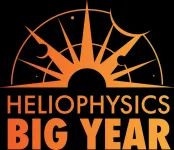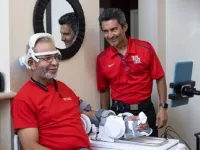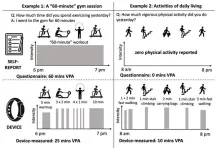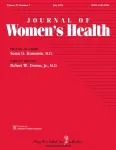(Press-News.org) Researchers from the United Kingdom hope that a new, publicly available database they have created will shrink, not grow, over time. That’s because it is a compendium of the thousands of understudied proteins encoded by genes in the human genome, whose existence is known but whose functions are mostly not. The database, dubbed the “unknome”, is the work of Matthew Freeman of the Dunn School of Pathology, University of Oxford, England, and Sean Munro of MRC Laboratory of Molecular Biology in Cambridge, England, and colleagues, and is described in the open access journal PLOS Biology. Their own investigations of a subset of proteins in the database reveal that a majority contribute to important cellular functions, including development and resilience to stress.
The sequencing of the human genome has made it clear that it encodes thousands of likely protein sequences whose identities and functions are still unknown. There are multiple reasons for this, including the tendency to focus scarce research dollars on already-known targets, and the lack of tools, including antibodies, to interrogate cells about the function of these proteins. But the risks of ignoring these proteins are significant, the authors argue, since it is likely that some, perhaps many, play important roles in critical cell processes, and may both provide insight and targets for therapeutic intervention.
To promote more rapid exploration of such proteins, the authors created the unknome database (www.unknome.org), that assigns to every protein a “knownness” score, reflecting the information in the scientific literature about function, conservation across species, subcellular compartmentalization, and other elements. Based on this system, there are many thousands of proteins whose knownness is near-zero. Proteins from model organisms are included, along with those from the human genome. The database is open to all and is customizable, allowing the user to provide their own weights to different elements, thereby generating their own set of knownness scores to prioritize their own research.
To test the utility of the database, the authors chose 260 genes in humans for which there were comparable genes in flies, and which had knownness scores of 1 or less in both species, indicating that almost nothing was known about them. For many of them, a complete knockout of the gene was incompatible with life in the fly; partial knockdowns or tissue-specific knockdowns led to the discovery that a large fraction contributed to essential functions influencing fertility, development, tissue growth, protein quality control, or stress resistance.
The results suggest that, despite decades of detailed study, there are thousands of fly genes that remain to be understood at even the most basic level, and the same is clearly true for the human genome. “These uncharacterized genes have not deserved their neglect,” Munro said. “Our database provides a powerful, versatile and efficient platform to identify and select important genes of unknown function for analysis, thereby accelerating the closure of the gap in biological knowledge that the unknome represents.”
Munro adds, “The role of thousands of human proteins remains unclear and yet research tends to focus on those that are already well understood. To help address this we created an Unknome database that ranks proteins based on how little is known about them, and then performed functional screens on a selection of these mystery proteins to demonstrate how ignorance can drive biological discovery.”
#####
In your coverage, please use this URL to provide access to the freely available paper in PLOS Biology: http://journals.plos.org/plosbiology/article?id=10.1371/journal.pbio.3002222
Citation: Rocha JJ, Jayaram SA, Stevens TJ, Muschalik N, Shah RD, Emran S, et al. (2023) Functional unknomics: Systematic screening of conserved genes of unknown function. PLoS Biol 21(8): e3002222. https://doi.org/10.1371/journal.pbio.3002222
Author Countries: United Kingdom
Funding: This work was supported by the Medical Research Council, as part of United Kingdom Research and Innovation (MC_U105178783 to SM and MC_U105178780 to MF). RDS was funded by the Engineering and Physical Sciences Research Council (EP/R013381/1) and by the Alan Turing Institute through a Turing Fellowship (TU/B/00006). The funders had no role in study design, data collection and analysis, decision to publish, or preparation of the manuscript.
END
Dissolved organic matter (DOM) can be found in every water body on Earth, encompassing both saltwater and freshwater. It is a significant carbon source and is critical in environmental carbon cycling, which is the circulation of carbon in various forms through the environment and nature that makes the Earth sustainable for life.
The interaction between DOM and sunlight is essential for the carbon cycle to function effectively. However, the chemical structure of light-absorbing compounds, also known as chromophores, in DOM remains limited.
Dr. Garrett McKay, principal investigator of the Aquatic Chemistry Lab and assistant professor ...
WASHINGTON — Researchers have reported the first 3D measurements acquired with quantum ghost imaging. The new technique enables 3D imaging on a single photon level, yielding the lowest photon dose possible for any measurement.
“3D imaging with single photons could be used for various biomedical applications, such as eye care diagnostics,” said researcher Carsten Pitsch from the Fraunhofer Institute of Optronics, System Technologies and Image Exploitation and Karlsruhe Institute of Technology, both in Germany. “It can be applied to image materials and tissues that are sensitive to light or drugs that become toxic when exposed ...
This October, NASA is launching the Heliophysics Big Year – a global celebration of solar science and the Sun’s influence on Earth and the entire solar system. Modeled after the “Big Year” concept from citizen scientists in the bird-watching community, the Heliophysics Big Year challenges everyone to get involved with fun Sun-related activities.
For each month from October 2023 to December 2024, the Heliophysics Big Year will celebrate under a theme, sharing opportunities to participate in many solar science events from watching eclipses to joining citizen science projects. During ...
The world of at-home stroke rehabilitation is growing near, incredible news for the 795,000 people in the United States who annually suffer a stroke. A new low cost, portable brain-computer interface that connects the brain of stroke patients to powered exoskeletons for rehabilitation purposes has been validated and tested at the University of Houston.
“We designed and validated a wireless, easy-to-use, mobile, dry-electrode headset for scalp electroencephalography (EEG) recordings for closed-loop brain–computer ...
Listening to music and drinking coffee are the sorts of everyday pleasures that can impact a person’s brain activity in ways that improve cognitive performance, including in tasks requiring concentration and memory.
That’s a finding of a new NYU Tandon School of Engineering study involving MINDWATCH, a groundbreaking brain-monitoring technology.
Developed over the past six years by NYU Tandon's Biomedical Engineering Associate Professor Rose Faghih, MINDWATCH is an algorithm that analyzes a person's brain activity from data collected via any wearable device that can monitor electrodermal activity ...
Washington, DC— As climate change progresses, rising temperatures may impact nitrogen runoff from land to lakes and streams more than projected increases in total and extreme precipitation for most of the continental United States, according to new research from a team of Carnegie climate scientists led by Gang Zhao and Anna Michalak published in the Proceedings of the National Academy of Sciences.
The conditions predicted by these findings are opposite to recent decades, when increasing precipitation has outpaced warming and led to more aquatic nitrogen pollution. Understanding the relative roles of changes in temperature and rainfall is critical for designing ...
In a series of three editorials published in the British Journal of Sports Medicine, the international team of scientists discuss issues facing the wearables field including lack of standardisation of devices and data, disconnects between research and industry and the impact of inequality in ownership.
Currently around a third of UK adults own a smartwatch or fitness tracker. A 2021 Australian-based survey reported 24 percent used fitness trackers and 23 percent used smartwatches.
Some use them to track their steps, others their sleep, but few understand the potential of these devices to transform our understanding of how everyday activity influences health.
“If you ...
The Persian Gold Tarantula (Chaetopelma persianum) is a newly described species recently discovered in northwestern Iran. In fact, the “woolly, golden hairs” the scientists observed and examined on a single specimen, were one of the features so unique that it was not necessary for additional individuals to be collected and physically studied. It was clear enough that it was a species previously unknown to the scientific community.
The paper, authored by Iranian arachnologist and taxonomist Dr Alireza Zamani (University of Turku, Finland) and his Canadian colleague Rick C. West, was published in the peer-reviewed, open-access scientific journal ZooKeys on the observance ...
TUSCALOOSA, Ala. – A lack of time management skills, particularly in organization, can lead to poor sleep quality for college students according to research conducted at The University of Alabama.
Dr. Adam Knowlden, associate professor of health science with the UA College of Human Environmental Sciences, investigated time management and how it influences sleep health in full-time college students in the areas of setting goals and priorities, mechanics of time management, and preference for organization.
“College students tend to deal with lifestyle-related sleep problems,” said Knowlden. “For example, balancing academic and social ...
A new study has shown that among incarcerated women, many have to trade or barter to access menstrual hygiene products. The study, which examines menstrual equity, or the access to menstrual products and safe menstruating environments, in the criminal legal system, is published in the peer-reviewed Journal of Women’s Health. Click here to read the article now.
Patricia Kelly, PhD, from Thomas Jefferson University School of Nursing, and coauthors, found that 53.8% of women involved in the criminal legal system received less than five menstrual ...






